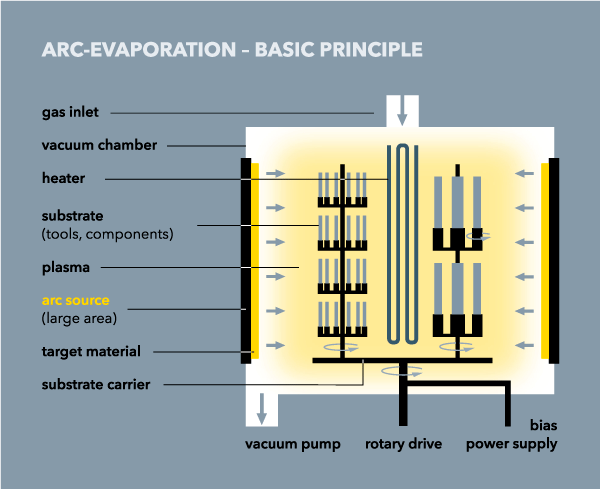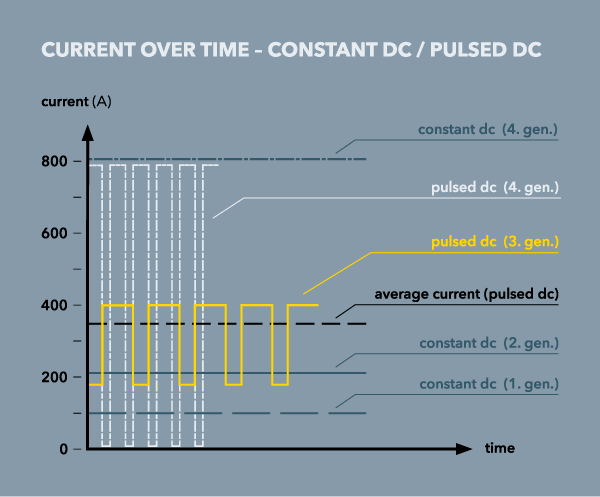Arc-evaporation
During arc evaporation the magnetically guided arcs are run in a controlled manner over the coating material (target), being e.g. Ti, AlTi, AlCr, TiSi etc. The arcs cause a nearly 100% ionization of the evaporated material.
The ionized metal vapor recombines with the reactive gases, such as 2 Ti + N2 (nitrogen) > 2 TiN (Titanium-nitride).
Due to the high intrinsic energies and the extremely good throwing power of the arc-evaporation process very well adherent coatings can be uniformly deposited, even on complex-shaped, 3-dimensional substrates (parts and tools), while single, double and triple rotation of the parts support the uniform deposition.
Depending on the application different process are used, such as arc evaporation with constant dc power or pulsed dc power at different power levels whereas the substrates are electrically biased either with constant dc, pulsed dc or bipolar pulsed dc bias-power.
The processes are designed that the arcs are uniformly run over the targets to control and minimize the number and size of the micro-droplets and to maximize the target utilization. The principle of the process is displayed in the sketch below.

PDA and HiParc
PDA (Plasma Diffused Arc) and HiParc (High Power Pulsed Arc) are two processes developed by PVT to maximize the target utilization, to minimize the size of the micro-droplets and to increase productivity.

The Arc: Standard, PDA, HiParc, PDA + HiParc
Standard arc – 1st generation

PDA III – much higher plasma density; more diffused

HiParc – Pulsed arc; much higher power level

HiParc + PDA III – very high power level; 3rd generation

